Art exhibit in Pueblo museum is a cruise through the diverse history of Mexican-Americans
Walking through the "Hecho en Colorado" exhibit at El Pueblo History Museum is like cruising in a lowrider through the lives of Mexican-Americans in the U.S., and discovering the diversity of a group of people many tend to bundle under a single overly simple definition.
The exhibit takes visitors through a cultural melting pot that defines the Mexican-American identity, said Adrianna Abarca, whose art collection makes up the bulk of the works on display at the museum.
Diverse ancestry influences Chicano art
Mexican-Americans don't have just Mayan, Aztec or Spanish roots, but also Jewish, German, Lebanese, French, and other heritage, Abarca said during a visit to the museum on the eve of Cinco de Mayo, which, in fact, commemorates Mexico's ties to the French, whom they defeated in the battle of La Puebla in 1862.
"The German influence is evident in the music — we have polka dances and accordion music," Abarca said. "The Lebanese were in this region, the French. A lot of the Chicanos in Pueblo have French names that changed with time."
Many Chicanos also have Native American heritage, but it is less easy to track because "the history was wiped out and that knowledge was destroyed," Abarca said.
"It's almost impossible to recapture, and, for that reason, a lot of the artwork in this show has references to Aztec or Mayan cultures — because that's the only thing artists could find resources in when they were creating their art.
"Knowing you have Native blood, but not knowing what it is — Apache, Ute, Cheyenne, Arapahoe — you start with what is available to you," with the cultures that are known to be connected to yours, she said.
In the case of many Mexican-Americans, that connection is with the Mayans and Aztecs. Their influence is evident in the artwork on display at the museum in downtown Pueblo.
The jaguar, which Abarca said is the "most powerful beast on our continent," is featured in at least one of the paintings. The Aztecs have a god of jaguars, and, in Mayan mythology, the animal is one of the rulers of the underworld.
It is also seen by the two ancient cultures as a creature that links the celestial with the terrestrial, another frequent theme in the art on display.
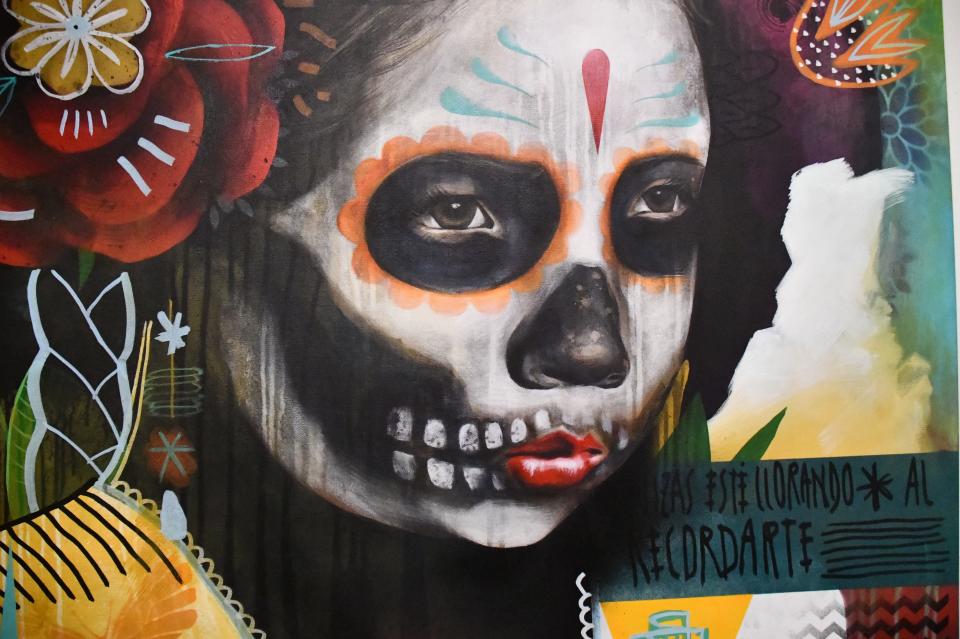
With DNA analyses now available, Abarca expects that many Chicanos will learn that "even though they have Spanish surnames, a lot of these people were Natives," she said.
Many who have migrated to what is now the U.S. from Mexico and Central America over the centuries, and settled in New Mexico and southern Colorado, probably have Apache, Arapahoe, Cheyenne, Ute and other Native American ancestry, she said.
"As that history opens up, it will influence the artwork," she said.
Jewish, DREAMer and graffiti influences
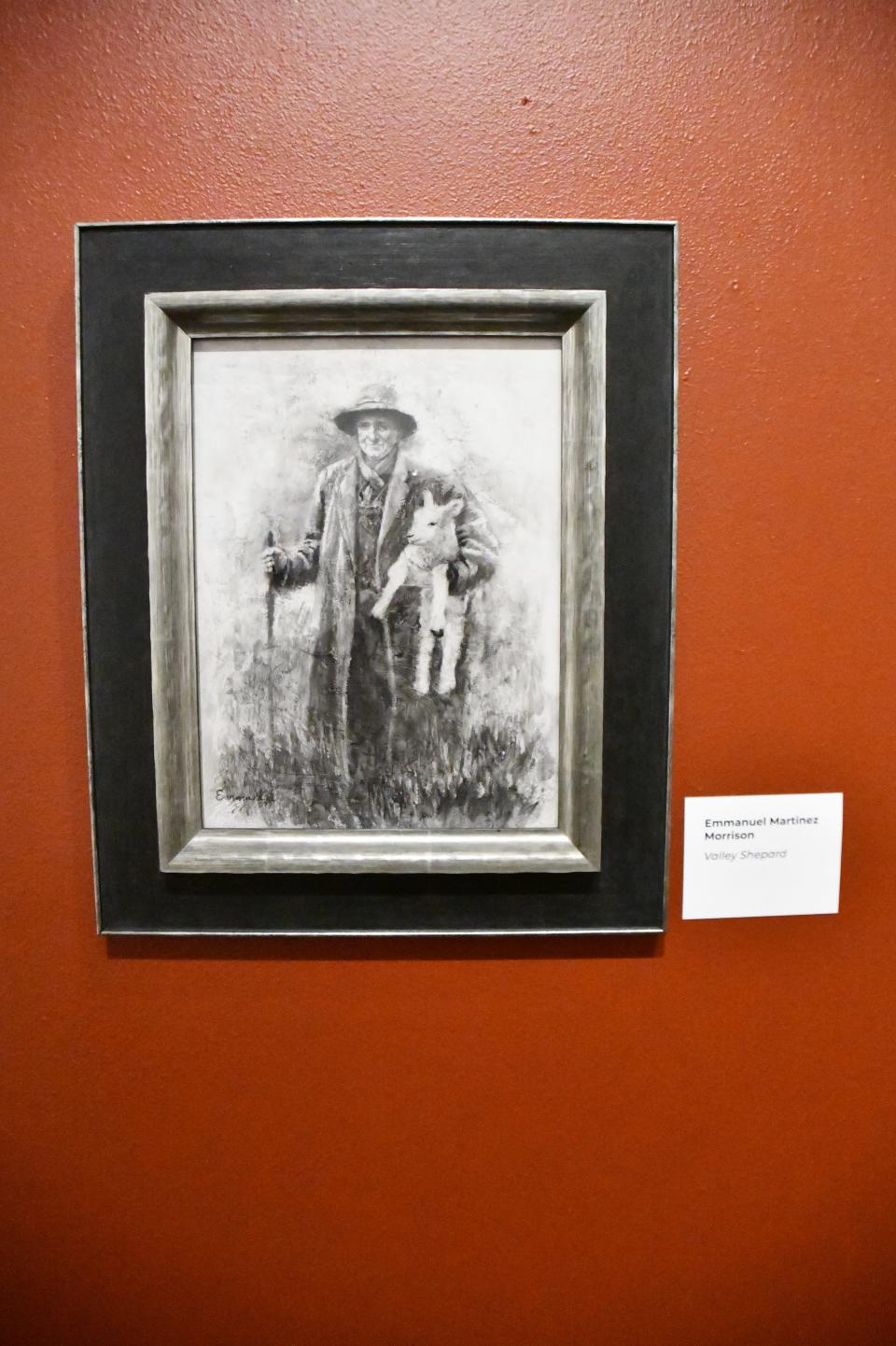
In one corner of the exhibit rooms, a framed sketch shows a man holding a lamb. Nearby, a painting shows a vaquero, or cowboy, in leather chaps.
"A lot of the sheep herders in this region and Mexico came from the Basque country in Spain, where there were a lot of Jews," Abarca said.
"Jews in Spain were leather workers and silversmiths and brought those traditions with them to this region. I believe the reason why sheep herding was so popular in this region is because the Jews who came here didn't want to eat pork," she said.
"And when cattle were introduced, they became vaqueros, and the Jews tooled a lot of the leather you see in this region."
More: Pueblo mural by Chicano artist one of dozens in Colorado added to endangered heritage list
The exhibit also uses art to chronicle the lives of modern-day Chicanos.
One exhibit shows jewelry made by a DREAMer who was brought to the U.S. as a child without the documentation required by immigration authorities. She began creating jewelry because she couldn't find employment without a Social Security number, Abarca said. The jeweler, Ana Marina, turned a difficult situation into something positive, she said.
One corner is dedicated to graffiti artist Jolt, and includes the jumpsuit he wore when he was creating many of his works.
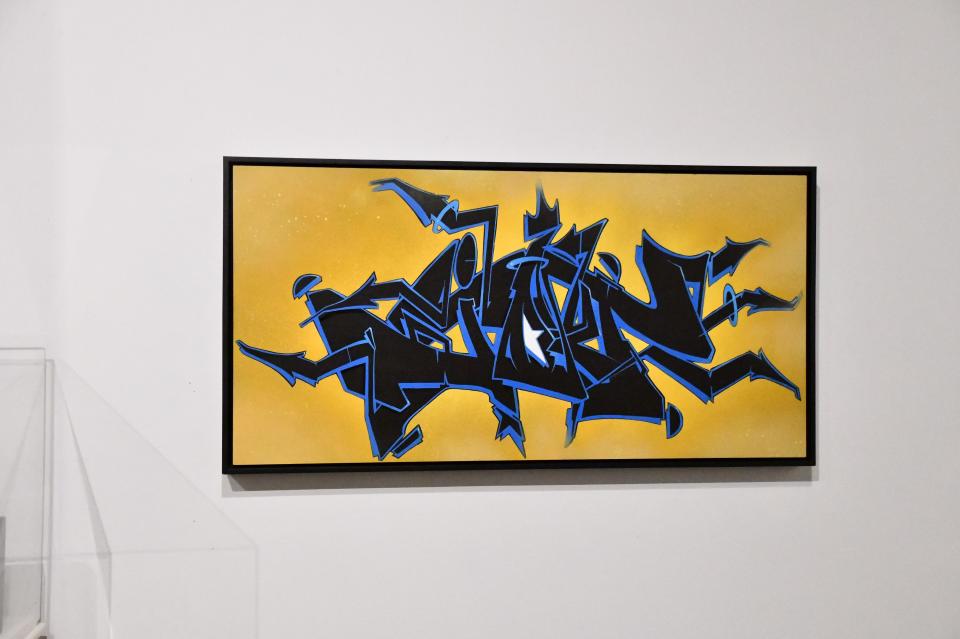
Exporting new traditions
Chicano art is hybrid art, honoring the traditions of the artists' origins while simultaneously creating new traditions.
"Artists are very much affected by their place, their history at the time, but also by the place and history of their family that came before them.," Abarca said.
Several paintings and woven sculptures depict the Day of the Dead holiday, which began in central and southern Mexico but was "grabbed onto by Chicanos in search of their identity."
Now, customs that began in the U.S., such as face-painting, which have become associated with the Nov. 1 holiday, are spreading back to Mexico, she said.
"Art is not created in a bubble," she said. "Easy access to international media will affect the art we produce as we go into the future."
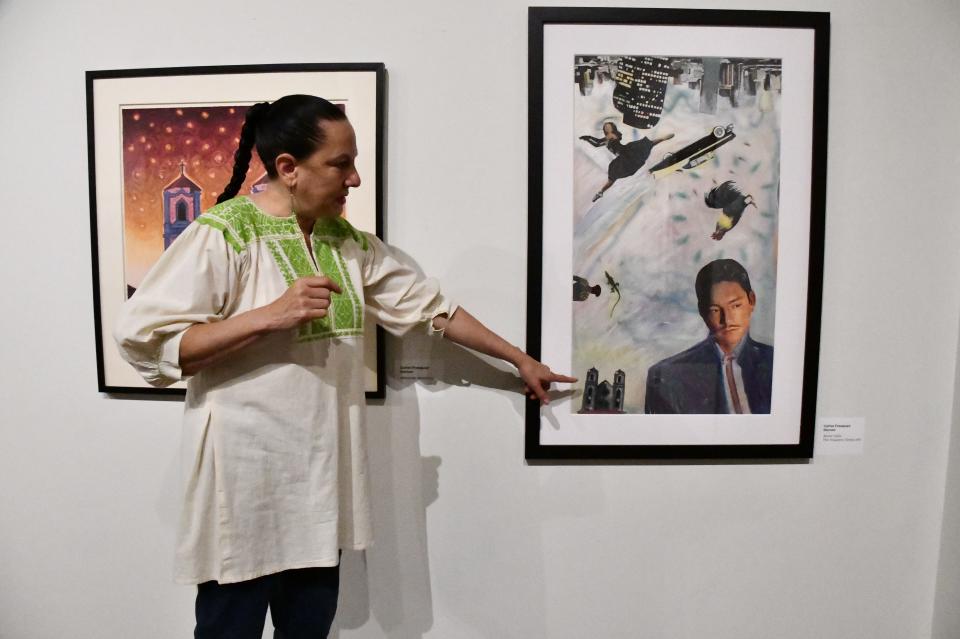
Chicano identity on display
The art expresses the many aspects of the Chicano identity in its U.S. — lowrider cars, including Jolt's; fedora hats associated with the "cholo" culture; St. Cajetan's, the first Mexican-American church in Denver.
There's a poster from the civil rights movement that Abarca found in an estate sale, a Zoot suit, embroidered dresses, elaborately woven sculptures, photographs, sketches, protest art and more.
More: Pueblo food truck wins 'golden ticket' to Governor's Plate competition at Colorado State Fair
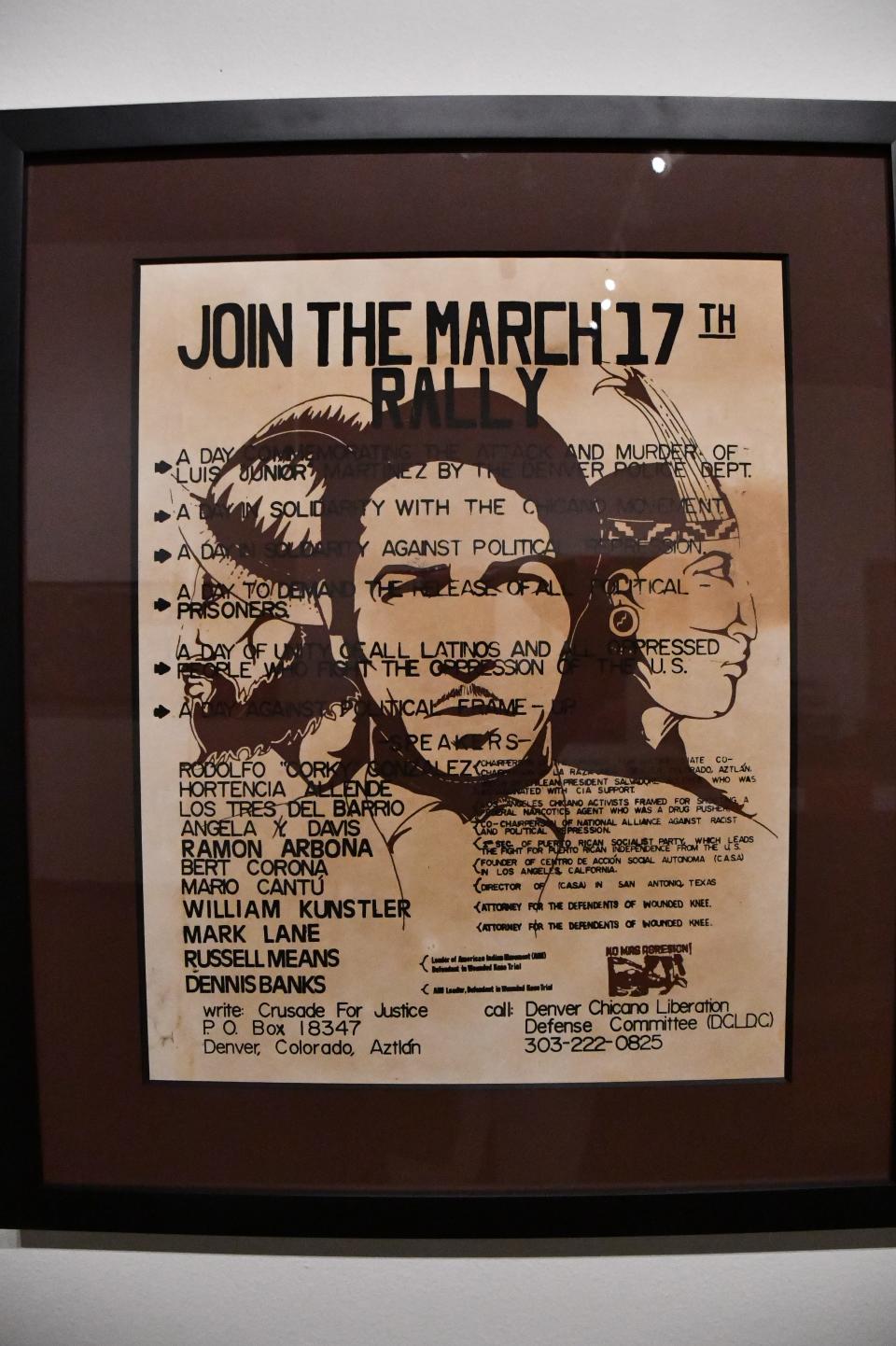
A sketch by Leo Tanguma for a mural that never came to fruition, shows a young woman with unsavory-looking characters on one side and wholesome ones on the other. Its message, said Abarca, is that "we need to protect our youth from falling into the evils of society — drug consumption, violence, corruption. The way that we protect them is mostly through education, but also by giving them a sense of cultural identity and pride."
"I want young people who come to this show to realize we come from centuries of greatness and there's nothing to be ashamed of," she said.
"In fact, it's the complete opposite. They should be incredibly proud to be of Mexican heritage. I think that's apparent when you see the quality and diversity of the artistic expressions here."
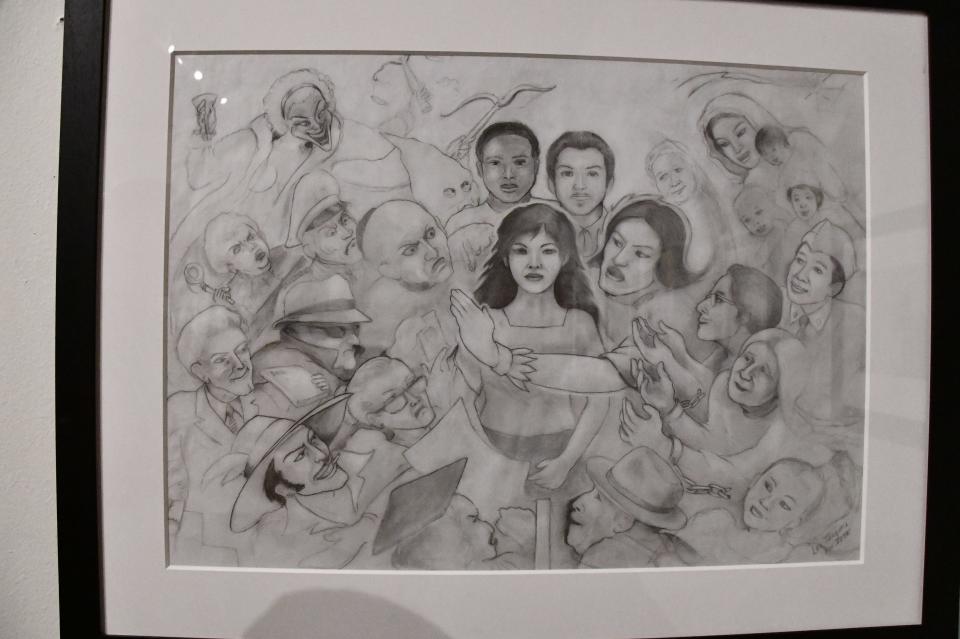
Inspired by dad's love of Chicano art
Abarca's love of Chicano art was instilled in her by her father, who co-founded Ready Foods in Denver 50 years ago.
"When he started to have some economic means, he spent a lot of time visiting with Chicano artists in their studios in Denver," Abarca said during a visit to Pueblo in early May for the opening of the exhibit.
More: Pueblo's Sangre de Cristo Arts Center offers free admission Saturday on Community Access Day
"When he found pieces he enjoyed, he would purchase them. That helped the artists continue their careers," and began the family's collection.
Her father died 10 years ago, but Abarca's passion for Chicano art and the stories and lessons it conveys lives on.
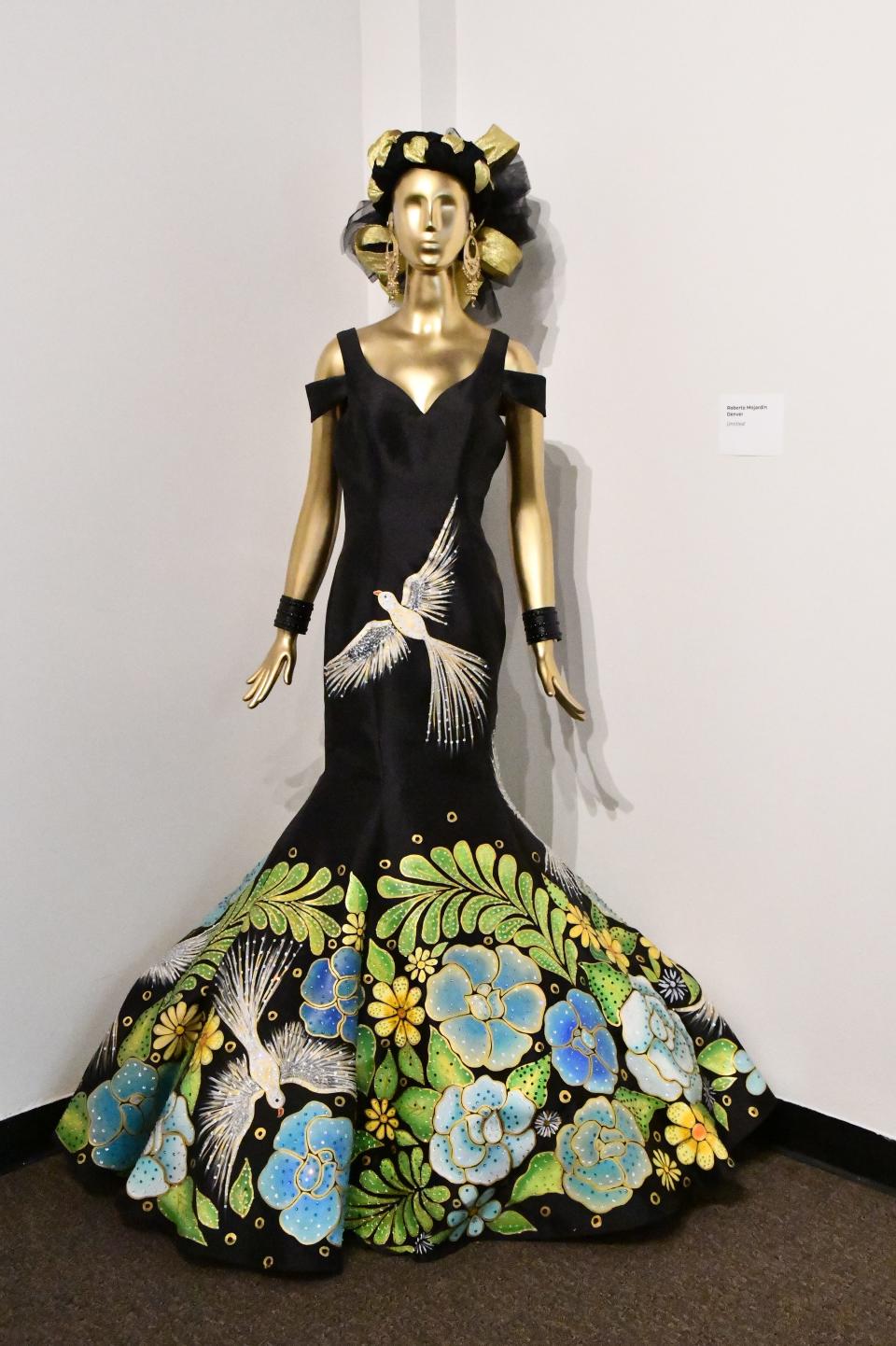
The founder and board chair of the under-development Latino Cultural Arts Center of Colorado, based in Denver, Abarca provided all of the 60 or so pieces that will be on display at El Pueblo History Museum until the end of the year.
"I know the histories behind the pieces, I know the artists, I know the historic context they were created in and what they are expressing," said Abarca, who lives in Denver.
"it's really important that this exhibit was brought to Pueblo because a lot of the artists and a lot of people in Denver have their roots in southern Colorado," she said.
"There's a real connection to this region."
Abarca is leaving the family business that her father built — the one that allowed him to start the family art collection — to focus on creating the Latino Cultural Arts Center of Colorado.
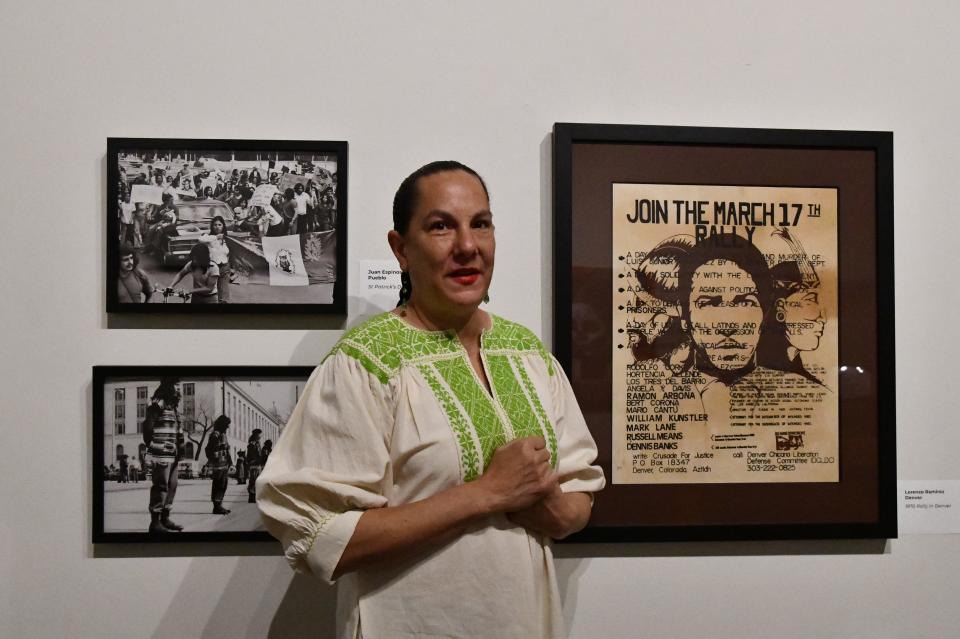
It will be based in Denver, but "we want to continue to work with Pueblo on projects and workshops and visiting artists," she said.
The center, which will feature all art forms, including culinary art, will eventually be extended into New Mexico and internationally, allowing "a flow of talent throughout the Americas" and beyond.
"We want to develop our talent and make sure future generations are developing their talent at the highest level," Abarca said.
Karin Zeitvogel can be contacted by email at kzeitvogel@chieftain.com.
This article originally appeared on The Pueblo Chieftain: Pueblo museum exhibit showcases diversity of Mexican-Americans

